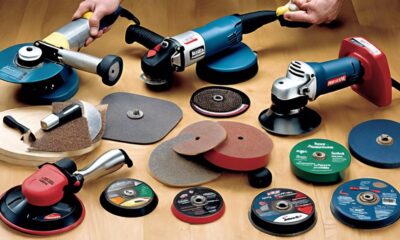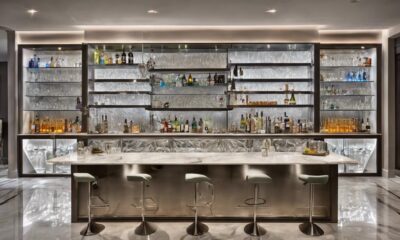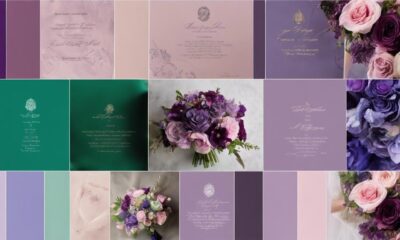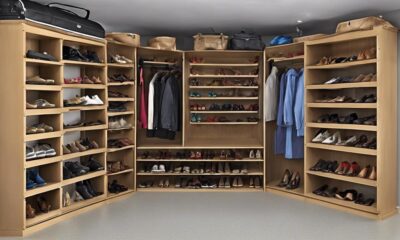Decor
What Is French Country Decor
2025
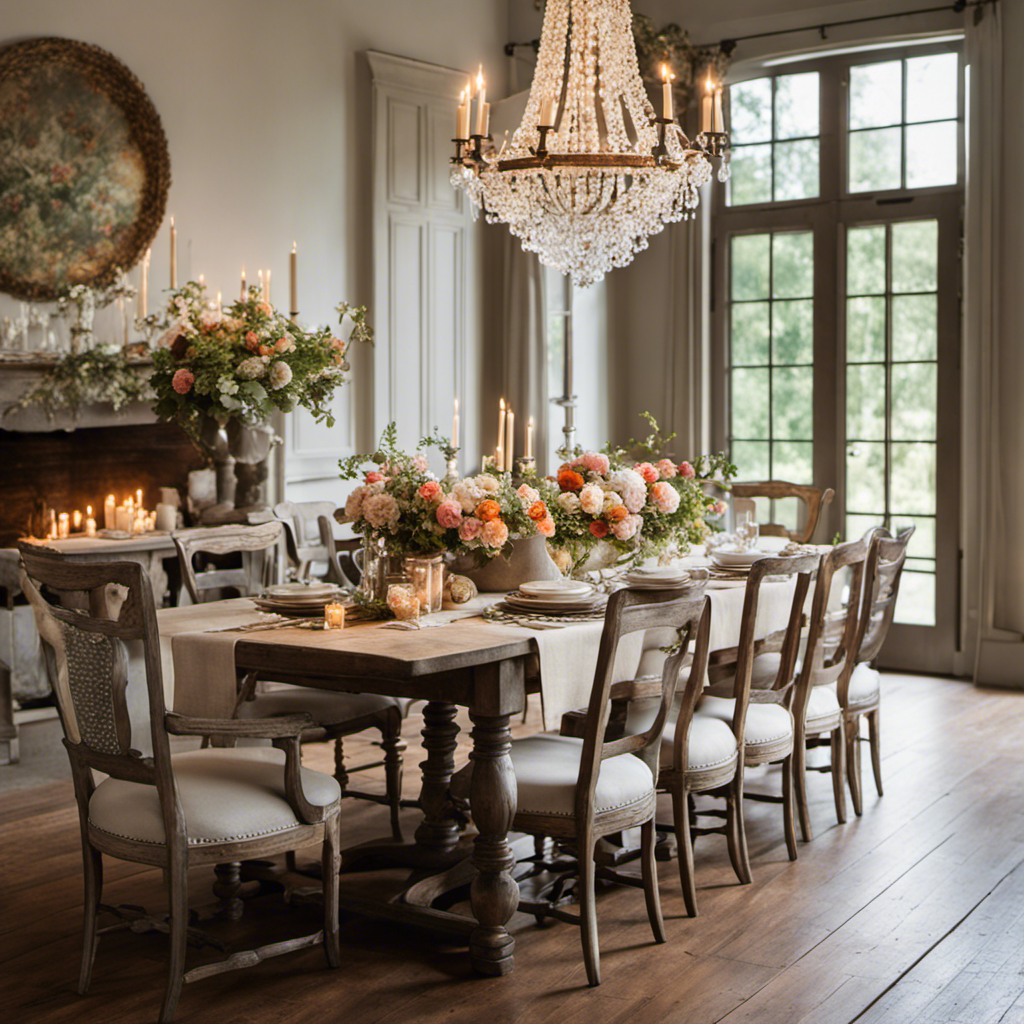
As someone who appreciates all things related to home decor, I have always been fascinated by the charm and sophistication of French Country style. From the rustic farmhouse elements to the delicate fabrics and intricate patterns, French Country decor beautifully embodies the feeling of a warm and welcoming space.
In this article, we will explore the history, characteristics, and design elements that make up this timeless style. So, grab a cup of coffee and let’s dive into the world of French Country decor. This elegant yet rustic aesthetic combines the warmth of provincial living with a touch of refined sophistication, creating spaces that feel both cozy and effortlessly chic. From distressed wooden furniture to soft color palettes and intricate details, French Country decor encapsulates a harmonious blend of functionality and charm. Stay tuned as we uncover the secrets behind this style, with bougie decor explained in detail to showcase how elevated elements can seamlessly integrate into classic rural-inspired designs.
Key Takeaways
- French Country Decor originated in the 17th and 18th centuries, and it shares similarities with shabby chic style and modern farmhouse design.
- It incorporates traditional elements like ornate chandeliers and intricate woodwork, while celebrating natural materials and rustic elements.
- The color palette in French Country Decor includes rustic earthy tones, soft pastel hues, and vibrant Provencal colors to create a cozy, elegant, and lively atmosphere.
- The furniture, upholstery, and textiles in French Country Design exude rustic elegance and incorporate fabrics like linen and toile with intricate patterns, creating an authentic and inviting atmosphere.
History of French Country Decor
The history of French country decor dates back to the 17th and 18th centuries. This style has had a significant influence on modern farmhouse design, as its rustic charm and warm aesthetic have become increasingly popular.
French country decor shares similarities with the shabby chic style, characterized by its distressed furniture and soft, pastel color palette. However, French country decor often incorporates more traditional elements, such as ornate chandeliers, toile fabrics, and intricate woodwork.
This style celebrates the beauty of natural materials and embraces a sense of elegance and sophistication. Moving on to the characteristics of French country style, it is characterized by its use of natural materials, muted colors, and a balance between rustic and refined elements.
Characteristics of French Country Style
Embrace the charm of rustic elements and incorporate them into your home to achieve the timeless elegance of French country style. French country decor is all about creating a warm and inviting space that exudes a sense of comfort and refinement.
Here are some key characteristics of French country design:
-
Natural materials: Utilize materials such as wood, stone, and wrought iron to bring a rustic touch to your space.
-
Soft color palette: Opt for soft, muted tones like creams, pastels, and earthy hues to create a calming and serene ambiance.
-
Ornate details: Incorporate intricate details like carved wood accents, delicate upholstery, and intricate patterns to add a touch of sophistication to your decor.
-
Vintage pieces: Mix in antique furniture and accessories to create a sense of history and charm in your space.
-
Floral motifs: Embrace the beauty of nature by incorporating floral prints and patterns in your upholstery, curtains, and wallpaper.
With these elements in mind, you can effortlessly create a French country-inspired home that exudes elegance and warmth.
Now, let’s explore the color palette in French country decor…
Color Palette in French Country Decor
When it comes to the color palette in French country decor, there are three key points to consider.
First, rustic earthy tones like warm browns, deep greens, and burnt oranges are often used to create a cozy and inviting atmosphere in a French country home.
Second, soft pastel hues such as pale blues, delicate pinks, and muted yellows add a touch of femininity and elegance to the overall design.
Lastly, vibrant Provencal colors like bold reds, vibrant blues, and sunny yellows bring a lively and energetic feel to the space, reflecting the vibrant culture of the region.
Rustic Earthy Tones
French country decor incorporates rustic, earthy tones to create a warm and inviting atmosphere. The use of a neutral color palette is a key characteristic of this style, as it allows for a sense of simplicity and tranquility.
Natural materials such as wood, stone, and clay are often used to further enhance the rustic feel. These materials not only add warmth and texture to the space but also connect the interior with the natural world outside.
In French country decor, the focus is on creating a cozy and comfortable environment, and the use of earthy tones helps achieve this goal. From warm browns and rich terracottas to soft greens and muted blues, these colors evoke a sense of nature and bring a touch of the countryside into your home.
Transitioning into the subsequent section about ‘soft pastel hues,’ we can explore how these lighter shades are also utilized in French country decor to add a touch of elegance and femininity to the space.
Soft Pastel Hues
Soft pastel hues are commonly used in this style to add a subtle and delicate touch to the overall aesthetic. Pastel color schemes are a hallmark of French country living rooms, creating a sense of tranquility and elegance. These soft colors include pale blues, gentle pinks, muted yellows, and light greens, evoking a sense of serenity and natural beauty.
The pastel palette is often found in the upholstery, curtains, and accessories, creating a harmonious and soothing atmosphere. These colors work well with the rustic elements of French country decor, such as wooden furniture and exposed beams, creating a perfect balance between the refined and the rustic.
Transitioning into the next section, vibrant Provencal colors bring a lively and energetic twist to the French country style.
Vibrant Provencal Colors
To add a lively and energetic twist to your space, embrace vibrant Provencal colors in your palette. These colors are reminiscent of the beautiful landscapes and sunny fields of the Provence region in France.
When incorporating vibrant Provencal colors into your decor, consider the following:
-
Provençal Floral Prints:
-
Opt for curtains, throw pillows, or upholstery featuring bold and colorful floral patterns.
-
These prints will instantly add a touch of French charm and create a focal point in your space.
-
French Country Kitchen Accessories:
-
Add pops of vibrant Provencal colors to your kitchen with accessories like colorful ceramic dishes, vibrant tea towels, or a bright kitchen rug.
-
These accessories will bring life and cheerfulness to your cooking space.
By incorporating vibrant Provencal colors, such as those found in provençal floral prints and French country kitchen accessories, you can create a space that is full of energy and character.
Now, let’s explore how furniture and upholstery play a crucial role in French country design.
Furniture and Upholstery in French Country Design
When decorating your home with a French country style, consider incorporating furniture and upholstery that exudes rustic elegance. French country fabric and upholstery are key elements in creating an authentic and inviting atmosphere.
Look for fabrics that have a worn and aged appearance, such as linen or toile, which are commonly used in French country design. These fabrics often feature intricate patterns, such as florals or pastoral scenes, that add a touch of charm and whimsy to the space.
When selecting upholstery, opt for pieces that have a distressed or weathered finish, as this will further enhance the rustic feel of the room. French country upholstery is often adorned with decorative trimmings, such as tassels or fringes, which add a touch of luxury to the furniture.
By incorporating these elements into your design, you can create a warm and inviting French country aesthetic in your home.
And when it comes to textiles and patterns in French country decor…
Textiles and Patterns in French Country Decor
When it comes to French country decor, textiles and patterns play a crucial role in creating the cozy and charming atmosphere that is characteristic of this style. French country textiles are known for their rustic and natural feel, often featuring soft colors and floral or toile patterns.
Here are some key elements to consider when incorporating textiles into your French country design:
-
Fabrics: Opt for natural fabrics like linen, cotton, and wool to achieve an authentic French country look. These fabrics bring a sense of warmth and comfort to your space.
-
Linen: A popular choice for curtains, upholstery, and tablecloths, linen adds an elegant touch to any room.
-
Toile: This classic French pattern depicts intricate scenes of rural life and is commonly used for drapes, bedding, and upholstery.
By incorporating these textile patterns and fabrics into your French country decor, you can create a space that exudes warmth and elegance.
Next, let’s explore the accessories and decorative elements that complete the French country style.
Accessories and Decorative Elements in French Country Style
When it comes to traditional French country decor, accessories play a crucial role in adding charm and character to the space.
From antique clocks and weathered mirrors to vintage pottery and woven baskets, these accessories evoke a sense of rustic elegance.
Incorporating rustic decorative elements such as distressed wood, wrought iron, and natural materials like jute and linen further enhances the authentic French country aesthetic, creating a warm and inviting atmosphere.
Traditional French Country Accessories
Traditional French country decor includes a variety of accessories that add charm and character to any space. When it comes to the kitchen, French country style embraces rustic simplicity and elegance.
Some popular French country kitchen accessories include:
- Provencal table linens, such as tablecloths and napkins with beautiful prints and patterns.
- Vintage-inspired kitchen utensils, like copper pots and pans, which add a touch of authenticity.
- Ceramic dishes and pottery, such as colorful plates and bowls, that showcase the artisanal craftsmanship of the region.
In the bedroom, French country decor creates a cozy and inviting ambiance. Here are some essential French country bedroom accessories:
- Soft and luxurious bedding, with embroidered or lace details, to create a romantic atmosphere.
- Vintage-inspired mirrors and antique furniture pieces, like bedside tables or armoires, that bring elegance and history to the space.
Incorporating these French country kitchen and bedroom accessories will instantly transform your home into a charming and inviting retreat. To further enhance the rustic feel, incorporating rustic decorative elements such as distressed wood, wrought iron accents, and natural materials is key.
Incorporating Rustic Decorative Elements
To instantly add a rustic touch to your home, try incorporating distressed wood, wrought iron accents, and natural materials.
Incorporating vintage elements and mixing modern and rustic styles can create a charming and unique atmosphere in any space. Start by using distressed wood for furniture pieces like coffee tables or bookshelves. This will add character and a sense of history to your home.
Wrought iron accents, such as light fixtures, curtain rods, or wall decor, can further enhance the rustic vibe. Natural materials like stone or reclaimed brick can be used for fireplace surrounds or accent walls. These elements bring warmth and texture to your space.
By combining vintage pieces with modern furniture and accessories, you can create a balanced and inviting environment.
Now let’s explore how to incorporate this rustic charm into your French country kitchen design.
French Country Kitchen Design
French country kitchens often feature rustic elements and a warm, inviting atmosphere. To achieve this aesthetic, there are key design elements to consider, such as:
-
French Country Kitchen Cabinets:
-
Opt for cabinets with a distressed or weathered finish, giving them an aged and worn appearance.
-
Choose colors like cream, light blue, or sage green to create a soft and welcoming ambiance.
-
French Country Kitchen Lighting:
-
Install wrought iron or bronze chandeliers with delicate details and candle-inspired bulbs for an authentic French country look.
-
Incorporate pendant lights with glass shades or lanterns to add a touch of elegance and provide ample task lighting.
Transitioning to the subsequent section about French country bedroom design, we can explore how to create a cozy and charming retreat that perfectly complements the kitchen’s style.
French Country Bedroom Design
When designing your bedroom in the French country style, embrace the charm and warmth through rustic elements and a cozy ambiance. French country bedroom design is all about creating a space that feels inviting and relaxed, yet elegant and sophisticated.
Start by choosing a color palette that reflects the natural beauty of the French countryside, such as soft pastels, warm neutrals, and muted earth tones. Incorporate traditional French country furniture pieces, like an upholstered bed with a curved headboard and distressed finishes. Add vintage-inspired accessories, such as weathered mirrors, antique chandeliers, and delicate lace curtains.
To bring a touch of modernity to your French country bedroom, consider incorporating contemporary elements, such as sleek lighting fixtures or minimalist artwork. By blending traditional and modern elements, you can create a truly unique and timeless French country bedroom design.
Incorporating French Country Decor in Modern Interiors
Incorporating rustic elements and a cozy ambiance, modern interiors can effortlessly embrace the charm and warmth of French country design. By blending old and new styles, you can create a unique and inviting space that combines the beauty of vintage elements with the functionality of contemporary design.
Here are two ways to incorporate French country decor into modern interiors:
-
Use distressed wood: Introduce vintage charm by incorporating reclaimed or weathered wood furniture pieces. From a farmhouse-style dining table to a rustic coffee table, these pieces can add character and warmth to any room.
-
Add floral patterns: Embrace the traditional French country aesthetic by incorporating floral patterns in your decor. From floral wallpaper to throw pillows and curtains, these patterns can bring a touch of elegance and whimsy to your space.
Frequently Asked Questions
What Are the Origins of French Country Decor?
The origins of French Country Decor can be traced back to the influence of French Provencal style. It is characterized by rustic charm, natural materials, and warm colors, creating a cozy and inviting atmosphere.
What Are Some Common Misconceptions About French Country Style?
One common misconception about French country style is that it’s too rustic. However, the charm of French country decor lies in its ability to blend elegance with a touch of countryside simplicity.
How Can I Incorporate French Country Decor in a Small Space?
To incorporate French country decor in a small space, maximize space by using multifunctional furniture and clever storage solutions. Incorporate vintage elements like distressed furniture, floral patterns, and antique accessories for an authentic French country look.
What Are Some Ways to Add a Touch of French Country Style to a Bathroom?
To add a touch of French country style to a bathroom, create a French country inspired vanity area with a distressed wooden cabinet, a vintage mirror, and floral accents. Incorporate vintage elements like an antique clawfoot bathtub or a chandelier for an authentic French country feel.
Are There Any Specific Rules or Guidelines to Follow When Decorating With French Country Decor?
When decorating with French country decor, there are specific color schemes and essential elements to consider. It’s important to follow these rules to create an authentic and cohesive look in your space.
Conclusion
After exploring the rich history and charming characteristics of French Country decor, it is clear that this style is a true gem in the world of interior design.
With its warm color palette, rustic furniture, and delightful textiles, French Country brings a touch of elegance and coziness to any space.
Whether you choose to embrace this style in your kitchen, bedroom, or throughout your entire home, incorporating French Country decor will transport you to a picturesque countryside, filled with romance and timeless beauty.
So why not add a touch of French flair to your modern interiors and create a space that is both inviting and enchanting?
- About the Author
- Latest Posts
Meet Katherine, the creative enthusiast at ByRetreat who infuses her boundless passion for design into every remote workspace she crafts. With an innate sense of creativity and an eye for unconventional beauty, Katherine brings a unique and inspiring perspective to the team.
Katherine’s love for design is infectious, and her ability to think outside the box sets her apart. She believes that true artistry lies in embracing a variety of styles and mixing them harmoniously to create captivating spaces. By combining different textures, colors, and patterns, Katherine weaves a tapestry of creativity that breathes life into each remote workspace.
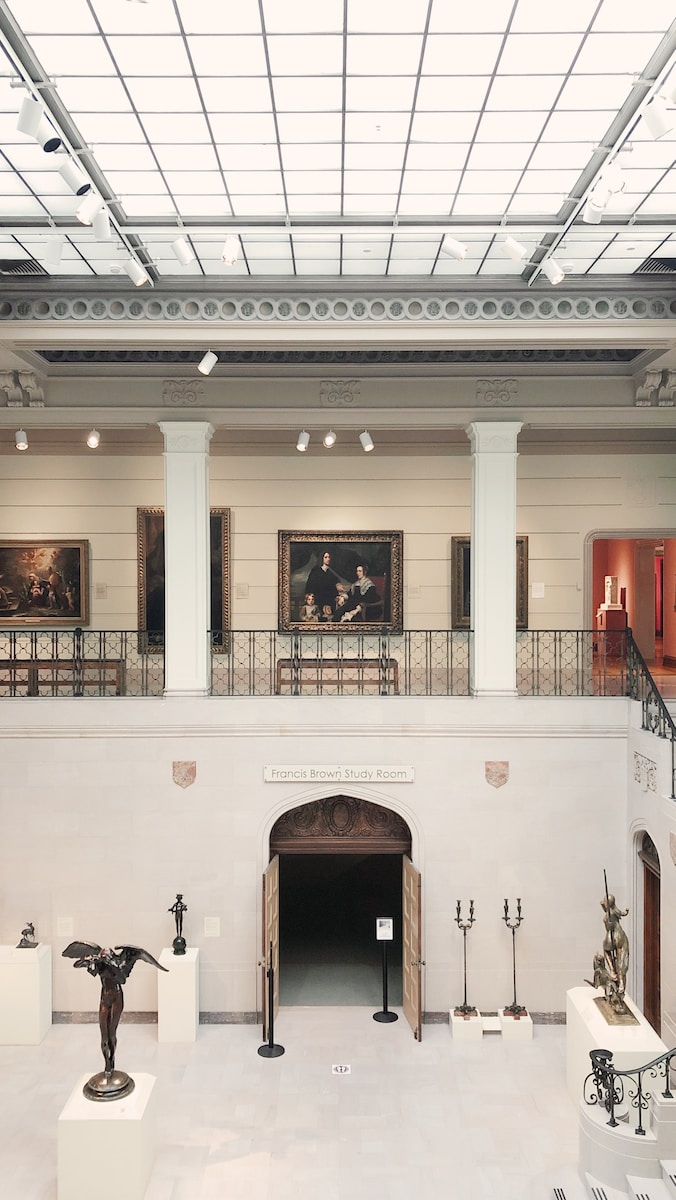
Hey! Were you aware that having a nicely decorated room can enhance your mood and creativity?
Well, if you’re a fan of dragons like me, I’ve got some exciting news for you. In this article, I’ll be sharing my expert tips and tricks on how to train your dragon room decor.
From choosing the perfect dragon theme to creating a cozy reading nook, we’ll cover it all.
So, get ready to unleash your inner dragon and transform your room into a magical haven!
Key Takeaways
- Personal style and preferences should be considered when choosing a dragon theme and color scheme for room decor.
- Dragon-themed wall art and murals can instantly transform plain walls into a mythical realm.
- Dragon-themed bedding and linens create a cozy and enchanting atmosphere in the room.
- Dragon-inspired furniture and accessories complement the dragon theme and enhance the overall ambiance.
Choosing the Perfect Dragon Theme
When choosing the perfect dragon theme for your room decor, it’s important to consider your personal style and preferences. Dragon themed room color schemes can vary from vibrant and bold to more subtle and earthy tones.
For a bold look, you can opt for fiery reds and oranges, symbolizing the fierce nature of dragons. Alternatively, if you prefer a more calming atmosphere, shades of green and blue can create a magical and mystical ambiance.
Once you have decided on the color scheme, the next step is finding unique dragon decor pieces. Look for dragon figurines, tapestries, and even dragon-inspired furniture to add an enchanting touch to your space.
And speaking of enchantment, let’s move on to the next section about wall art and murals, where you can truly bring your dragon theme to life.
Wall Art and Murals
Wall art and murals can add a unique and vibrant touch to any space. When it comes to creating a dragon-themed room, the possibilities are endless.
Dragon wall decals are a fantastic way to instantly transform a plain wall into a mythical realm. These decals come in various sizes and designs, allowing you to customize your dragon sanctuary to your liking.
If you prefer a more immersive experience, dragon themed wallpaper is the way to go. With intricate details and breathtaking visuals, it will transport you to a world filled with fire-breathing creatures and epic adventures. The dragon-inspired artwork will undoubtedly ignite your imagination and make your room truly one-of-a-kind.
Now, let’s move on to dragon bedding and linens, where comfort meets fantasy in a seamless blend.
Dragon Bedding and Linens
If you’re looking to create a cozy and enchanting atmosphere in your bedroom, dragon bedding and linens are the perfect choice. Imagine snuggling up in a soft and warm dragon-themed comforter, surrounded by dragon throw pillows and curtains that transport you to a magical world. To help you visualize the possibilities, here’s a table showcasing some dragon-inspired bedding and linens:
Bedding and Linens Description Dragon Comforter Made of plush material, featuring intricate dragon designs. Dragon Sheets Soft and breathable, adorned with colorful dragon prints. Dragon Pillowcases Silk-like texture, with embroidered dragon motifs. Dragon Themed Curtains Made of high-quality fabric, depicting majestic dragons in flight.
With dragon bedding and linens, your bedroom will exude a sense of adventure and fantasy. Now, let’s move on to the next section and explore furniture and accessories that will complete your dragon-inspired haven.
Furniture and Accessories
Now let’s take a look at some furniture and accessories that will complement your dragon-inspired haven.
To truly immerse yourself in the world of dragons, you’ll need furniture that captures their spirit. Consider investing in dragon-inspired furniture, such as a majestic dragon head chair or a dragon-shaped side table. These unique pieces will make a bold statement and become the focal point of your room.
To further enhance the dragon theme, dragon-themed wall decals can be added to your walls. These decals come in a variety of designs, from fierce dragons in flight to intricate dragon scales. They will bring your walls to life and create a sense of adventure and fantasy.
With the right furniture and wall decals, your dragon-inspired room will transport you to a magical world.
As we move on to lighting and ambiance, let’s explore how you can create a dragon’s lair atmosphere.
Lighting and Ambiance
When it comes to creating the ultimate dragon-themed room, one cannot underestimate the power of lighting and ambiance. Dragon-themed lighting options not only add a touch of whimsy and fantasy to the space but also serve as a focal point that captures the imagination.
From dragon-shaped table lamps to dragon-inspired chandeliers, there are endless possibilities to transform your room into a cozy and enchanting haven.
Dragon-Themed Lighting Options
You can create a cozy atmosphere in your room with dragon-themed lighting options. These unique and enchanting lamps and chandeliers will transport you to a world of mythical creatures and magical adventures.
-
Dragon Themed Lamps: Illuminate your space with a dragon lamp that casts a warm glow, showcasing intricate dragon designs in its base or shade.
-
Dragon Inspired Chandeliers: Make a bold statement with a dragon-inspired chandelier, featuring stunning dragon motifs and elegant crystal accents.
-
Color Changing Dragon Lights: Set the mood with color-changing dragon lights that create a mesmerizing ambiance, shifting through a spectrum of vibrant colors.
-
Dragon Wall Sconces: Add a touch of whimsy and mystery to your walls with dragon wall sconces, casting a soft and ethereal light.
With these dragon-themed lighting options, your room will be transformed into a mystical sanctuary, where you can immerse yourself in the enchantment of dragons.
Now, let’s explore how to further enhance this cozy atmosphere.
Creating a Cozy Atmosphere
To make your space feel cozy and inviting, consider incorporating soft and warm textures like plush blankets and fuzzy pillows. These elements not only add comfort to your dragon-themed room, but they also create a cozy atmosphere that will make you never want to leave.
To further enhance the ambiance, you can incorporate dragon-inspired color schemes that evoke a sense of magic and fantasy. For example, you can use deep blues and greens to represent the scales of a dragon, or incorporate fiery reds and oranges to mimic the flames that dragons breathe.
By combining these warm textures and vibrant colors, you can transform your room into a haven of relaxation and enchantment.
Now, let’s move on to organization and storage solutions, so you can keep your dragon treasures neatly arranged without cluttering your cozy space.
Organization and Storage Solutions
There’s no better way to declutter and tidy up your dragon-themed room than with some clever organization and storage solutions. Here are a few tips and tricks to help you keep your dragon treasures in order:
- Utilize wall-mounted shelves to display your dragon figurines and collectibles, creating a visually stunning focal point in the room.
- Invest in decorative storage boxes or bins that match your dragon theme, allowing you to neatly store smaller items such as stationery or accessories.
- Hang a pegboard on the wall, adorned with dragon-themed hooks, to hang up your hats, bags, and other items, keeping them easily accessible yet out of the way.
- Incorporate storage ottomans or benches that double as seating and provide hidden storage space for larger items like blankets or books.
With these storage solutions and organizing tips, your dragon-themed room will not only be visually appealing but also functional and clutter-free.
Now, let’s delve into the exciting world of DIY dragon crafts and projects.
DIY Dragon Crafts and Projects
I’m so excited to dive into the world of DIY Dragon Crafts and Projects!
In this discussion, we’ll explore Dragon-Themed Home Accessories, which will add a touch of whimsy and fantasy to your living space.
We’ll also explore Easy Dragon Paper Crafts, perfect for a fun afternoon activity or a themed party.
And finally, we’ll delve into the art of Repurposing Dragon-Themed Items, showing you how to give new life to old dragon collectibles and decor.
So grab your crafting supplies and let’s get started on this magical journey!
Dragon-Themed Home Accessories
You can find dragon-themed home accessories to add a touch of whimsy and adventure to your living space. From dragon themed wall decals to dragon inspired home accents, there are countless options to choose from. Let your imagination soar as you create a room that transports you to the realm of mythical creatures.
Dragon themed wall decals are an easy and affordable way to transform any room into a dragon’s lair. These decals come in various sizes and designs, allowing you to customize your space to your liking. Whether you prefer a fierce and majestic dragon or a cute and friendly one, there is a decal out there for you.
In addition to wall decals, dragon inspired home accents can further enhance the mystical atmosphere of your room. Consider adding dragon figurines, dragon-shaped bookends, or dragon-themed throw pillows to your decor. These small touches can make a big impact and bring your dragon-themed room to life.
Now that you have your dragon-themed home accessories in place, it’s time to take your creativity to the next level with easy dragon paper crafts. Let’s explore some fun and simple projects that will add a personal touch to your dragon-inspired room decor.
Easy Dragon Paper Crafts
Let’s get creative with some easy dragon paper crafts to add a personal touch to your dragon-inspired space. Whether you’re hosting a dragon-themed party or just want to spruce up your room, these crafts are sure to impress.
Here are three simple and fun ideas to get you started:
-
Dragon Origami: Fold colorful origami paper into intricate dragon shapes. You can create an entire collection of these little paper dragons and hang them from strings to create a whimsical mobile.
-
Dragon Masks: Cut out dragon mask templates from sturdy cardstock and decorate them with paints, markers, or glitter. These masks are perfect for a dragon-themed party or for imaginative play.
-
Paper Lanterns: Make dragon-themed paper lanterns using colored paper and LED tea lights. Simply fold the paper into a lantern shape, cut out dragon designs, and attach them to the lantern. When lit, these lanterns will create a magical ambiance in your space.
Now that we’ve added some dragon charm to your room with these easy paper crafts, let’s explore how to repurpose other dragon-themed items to complete your dragon-inspired haven.
Repurposing Dragon-Themed Items
To repurpose dragon-themed items, try using dragon figurines as bookends or display them on a shelf for a touch of whimsy in any room. These figurines can add a touch of fantasy to your home decor, whether you’re a fan of dragons or simply love unique pieces. But what else can you do with these dragon figurines? Here are some creative ideas for upcycling them:
Idea 1 Idea 2 Idea 3 Idea 4 Incorporate dragon figurines into a terrarium Use them as plant pot decorations Turn them into drawer pulls Paint them in different colors for a vibrant display
Additionally, if you want to incorporate dragon motifs in your curtains, consider adding dragon-themed fabric trim or sewing dragon-shaped fabric patches onto plain curtains. This small touch can instantly transform your windows into a magical dragon realm. With these unique ideas, you can effortlessly incorporate dragon-themed items into your home decor and unleash your imagination. Now, let’s move on to creating a dragon reading nook, where you can immerse yourself in the enchanting world of dragons.
Creating a Dragon Reading Nook
Start by selecting a cozy corner in your room for your dragon-themed reading nook. This little sanctuary will transport you to the magical world of dragons every time you settle in with a good book.
To set the mood, adorn the walls with dragon-themed artwork, such as intricate illustrations or majestic paintings. Choose a dragon-inspired color palette, like deep greens and fiery oranges, to create an immersive atmosphere.
Add a plush dragon-themed rug and some comfy pillows to make your reading spot extra inviting. You can even incorporate dragon figurines or bookends to enhance the theme further.
As you curl up with your favorite book, the ambiance of your dragon reading nook will amplify your imagination and take you on incredible adventures.
Now, let’s move on to personalizing your dragon room decor with even more enchanting touches.
Can the Tips for Decorating a Small Group Study Room Also be Applied to How to Train Your Dragon Room Decor?
When it comes to “small group study room decor,” the same tips can often apply to creating a “How to Train Your Dragon room decor.” Both spaces benefit from maximizing storage, utilizing versatile furniture, and adding strategic pops of color and themed accents to create an engaging and functional environment.
Personalizing Your Dragon Room Decor
Once you’ve chosen the perfect dragon-themed artwork and color palette, it’s time to add personal touches like dragon-inspired curtains or dragon-shaped bookshelves to complete your unique dragon reading nook.
Personalizing dragon room decor is all about infusing your own style and personality into the space. One creative way to do this is by incorporating dragon artwork that holds special meaning to you. Whether it’s a poster of your favorite dragon movie or a hand-painted canvas of a majestic dragon, these pieces will add a personal touch to your space.
You can also incorporate dragon motifs in smaller details, like dragon-shaped drawer handles or dragon-themed throw pillows. These little touches will make your dragon room decor truly one-of-a-kind and reflect your love for these mythical creatures.
So go ahead, let your imagination soar and create a dragon haven that is uniquely yours.
Frequently Asked Questions
Are There Any Safety Precautions to Consider When Decorating a Dragon-Themed Room for Children?
When decorating a dragon-themed room for children, it’s important to prioritize safety. Ensure that furniture is sturdy, avoid sharp edges, secure wall decorations properly, and use non-toxic paint.
How Can I Incorporate Different Dragon Species Into My Room Decor?
To incorporate different dragon species into my room decor, I’ll tap into the vast array of dragon inspiration in pop culture. From Game of Thrones to Dungeons and Dragons, I’ll find dragon-inspired room accessories that capture the essence of each species.
Can You Provide Some Tips for Creating a Budget-Friendly Dragon-Themed Room?
Creating dragon themed room decor on a tight budget can be a fun and creative challenge. DIY dragon themed room accessories, like dragon wall art or dragon bookends, can be made using affordable materials and your imagination.
What Are Some Creative Ways to Display Dragon Collectibles or Figurines?
I love finding creative ways to arrange dragon collectibles! One idea is to make DIY dragon themed shelves using reclaimed wood and decorative brackets. It adds a unique touch to any room decor!
Are There Any Specific Color Schemes or Patterns That Work Well With Dragon-Themed Room Decor?
When it comes to dragon-themed room decor, there are plenty of color schemes and patterns that can bring the design to life. From vibrant reds and golds to intricate dragon scales, the possibilities are endless!
Conclusion
After researching and exploring the world of dragon room decor, I have come to the conclusion that it truly is a magical and enchanting theme for any space.
From the vibrant wall art and murals to the cozy dragon bedding and linens, every aspect of this decor style brings a sense of adventure and wonder.
By incorporating dragon-themed furniture, accessories, and lighting, you can create a truly immersive atmosphere.
Additionally, organizing and storing your dragon treasures will keep your space neat and tidy.
And for those who love to get crafty, DIY dragon projects are a fun and personal way to add unique touches to your room.
Lastly, don’t forget to create a cozy reading nook where you can escape into the world of dragons through your favorite books.
With a little creativity and attention to detail, you can personalize your dragon room decor and make it truly your own.
So go ahead, unleash your inner dragon and transform your space into a mythical haven.
- About the Author
- Latest Posts
Meet Katherine, the creative enthusiast at ByRetreat who infuses her boundless passion for design into every remote workspace she crafts. With an innate sense of creativity and an eye for unconventional beauty, Katherine brings a unique and inspiring perspective to the team.
Katherine’s love for design is infectious, and her ability to think outside the box sets her apart. She believes that true artistry lies in embracing a variety of styles and mixing them harmoniously to create captivating spaces. By combining different textures, colors, and patterns, Katherine weaves a tapestry of creativity that breathes life into each remote workspace.
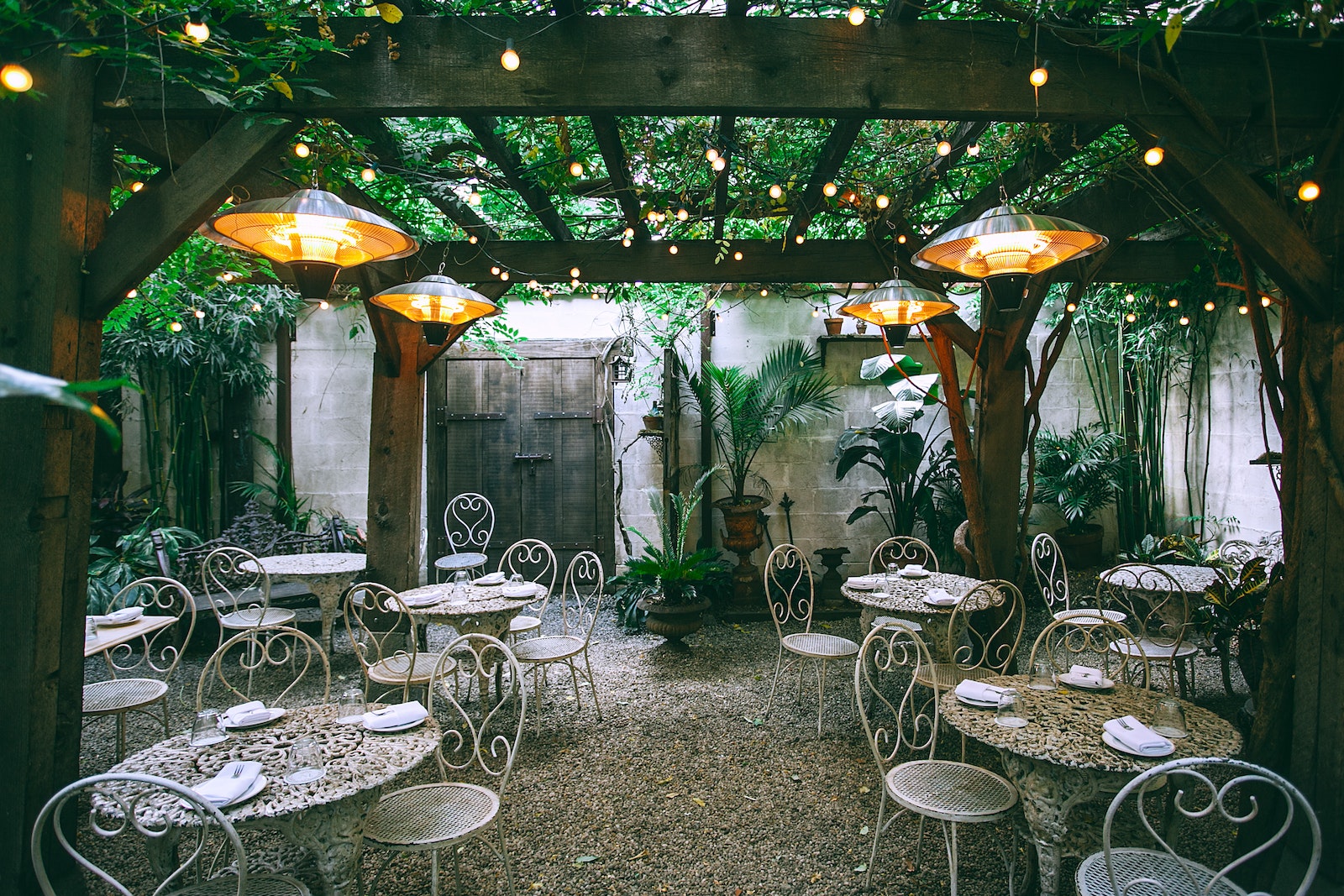
Yes, it’s true that giving metal decor a new coat of paint can completely change the aesthetic of a room.
In this article, I’ll guide you through the step-by-step process of painting metal decor, from preparing the surface to applying a protective finish.
With the right techniques and materials, you’ll be able to create beautiful, long-lasting pieces that will enhance your home or office.
So grab your paintbrush and let’s get started!
Key Takeaways
- Remove rust using a wire brush or sandpaper
- Choose paint formulated for metal surfaces
- Consider the type of metal being painted
- Apply thin, even coats of paint for a smooth finish
Preparing the Metal Surface
Before you can start painting, you’ll need to prep the metal surface.
Metal surface preparation is crucial to ensure that the paint adheres properly and lasts longer.
The first step is to remove any rust present on the surface. Start by using a wire brush or sandpaper to scrub away the rust.
Make sure to wear protective gloves and a mask to avoid inhaling any particles.
After removing the rust, wipe the surface clean with a damp cloth to remove any dust or debris.
For stubborn rust, you may need to use a rust remover or a chemical solution.
Once the surface is clean and rust-free, you can move on to choosing the right paint for your metal decor, ensuring a smooth and professional finish.
Choosing the Right Paint
When deciding on the appropriate paint for your metal accents, it’s important to consider the surface preparation. Choosing the right paint is crucial in achieving a smooth and long-lasting finish.
To start, opt for a paint specifically formulated for metal surfaces to ensure maximum adhesion and durability. Look for paints labeled as ‘metal paint’ or ‘enamel paint’ as they provide excellent coverage and resistance to chipping and flaking. Additionally, consider the type of metal you are painting, as certain paints may be better suited for different metals. For example, if you are painting outdoor metal furniture, choose a paint that is specifically designed to withstand harsh weather conditions.
Taking these tips into account will help you achieve a professional-looking finish.
Now that you have chosen the appropriate paint, it’s time to gather the necessary tools and materials for the painting process.
Gathering the Necessary Tools and Materials
To get started, make sure you have all the tools and materials you’ll need for the painting process. Here are the essential items you’ll need:
-
Choosing the right paint color:
-
Look for paints specifically designed for metal surfaces to ensure durability.
-
Consider the style and ambiance you want to create when selecting colors.
-
Test different paint swatches on a small area of the metal to see how they look under different lighting conditions.
-
Tips for achieving a smooth finish:
-
Clean the metal thoroughly to remove any dirt, grease, or rust before painting.
-
Use a high-quality primer designed for metal to create a smooth base for the paint.
-
Apply the paint in thin, even coats using a brush or spray gun, allowing each coat to dry completely before applying the next.
Now that you have all the necessary tools and materials, it’s time to move on to cleaning and sanding the metal.
Cleaning and Sanding the Metal
Once you’ve gathered all your tools and materials, start by cleaning and sanding the metal surface to ensure a smooth finish.
Metal cleaning is an essential step in surface preparation before painting. Begin by wiping the surface with a clean cloth to remove any dust or debris. If there are any grease or oil stains, use a mild detergent or degreaser to remove them.
Next, grab a sanding block or sandpaper and gently sand the metal in a circular motion. This helps to create a rough texture, allowing the paint to adhere better. Pay attention to any rough spots or rust, and sand them until they are smooth.
Once the metal is clean and sanded, it’s time to move on to applying a primer coat, which will provide a solid base for the paint to adhere to.
Applying a Primer Coat
Applying a primer coat helps create a smooth surface for the paint to adhere to. It is an essential step in the process of painting metal decor. To ensure a successful outcome, here are some tips for smooth application and troubleshooting common primer issues.
Firstly, make sure to clean and sand the metal surface thoroughly before applying the primer. This will remove any dirt, rust, or old paint, allowing the primer to bond effectively. Next, choose a high-quality metal primer that is specifically formulated for the type of metal you are working with.
To achieve a smooth application, follow these steps:
- Apply the primer in thin, even coats using a brush or spray gun.
- Allow each coat to dry completely before adding another layer.
- Sand the surface lightly between coats to remove any imperfections.
Table:
Tips for Smooth Application Troubleshooting Common Primer Issues Use thin, even coats Peeling or flaking primer Allow each coat to dry Uneven coverage Sand lightly between coats Bubbles or blistering
Painting Techniques for Metal Decor
Now that we have applied the primer coat to our metal decor, it’s time to move on to the next step: painting techniques.
When it comes to painting metal, there are a few tips that can help achieve a smooth and professional finish. First, choose the right type of paint for metal surfaces, such as acrylic or enamel. These paints provide excellent durability and adherence.
Next, consider the color selection. Opt for colors that complement your decor and create the desired ambiance. Darker shades can add drama, while lighter tones offer a more airy feel.
Remember to apply thin, even coats of paint, allowing each layer to dry completely before adding another. This will prevent drips and ensure a flawless result.
Transitioning into the next section about adding texture and dimension, let’s explore how to achieve these effects on our metal decor.
Adding Texture and Dimension
When it comes to adding texture and dimension to a painting, there are several key techniques that can be employed.
Brushstroke techniques can be used to create interesting textures, whether it be by using short, choppy strokes or long, sweeping strokes.
Layering is another effective method for adding depth to a painting, as it allows for different colors and values to be built up gradually.
Lastly, metallic finishes can be used to give a painting a sense of dimension, as the reflective properties of the paint can create a shimmering effect that catches the eye.
Brushstroke Techniques for Texture
To achieve a textured finish on your metal decor, try using different brushstroke techniques. Brushstroke techniques play a crucial role in creating texture and adding depth to your artwork.
One technique is the dry brush technique, where you load your brush with a small amount of paint and lightly drag it across the surface of your metal piece. This creates a rough and uneven texture, perfect for a distressed or aged look.
Another technique is stippling, where you use a stippling brush or even the end of a paintbrush to create small dots or dashes on the metal surface. This technique adds a subtle texture that can mimic the look of hammered metal.
By experimenting with different brushstroke techniques, you can achieve a unique and visually interesting textured finish on your metal decor.
Now, let’s explore how layering can further enhance the depth of your artwork.
Layering for Added Depth
If you want to achieve added depth in your artwork, try layering different colors and textures together. Layering techniques can bring a new dimension to your paintings, creating a visually captivating piece. Here are some key points to consider when using layering techniques:
-
Start with a base layer: Choose a color that serves as the foundation for your artwork. This will act as the backdrop for the layers to come.
-
Build up layers: Apply additional layers of paint, gradually adding more depth and complexity to your artwork. Experiment with different colors and blending techniques to create interesting effects.
By using layering techniques and blending colors, you can create a visually stunning piece of art that captivates the viewer’s attention.
Now, let’s explore how metallic finishes can further enhance dimension in your artwork.
Metallic Finishes for Dimension
You can enhance dimension in your artwork by incorporating metallic finishes, which add a touch of shine and depth to your piece.
Metallic patinas and aging techniques are excellent ways to achieve a weathered or antique look on your metal decor.
To create a metallic patina, start with a base coat of metallic paint in your desired color. Once dry, apply a patina solution over the paint and allow it to react with the metal. This will create a natural and authentic aged appearance.
For a more controlled effect, you can use aging techniques such as dry brushing or sponging on additional layers of metallic paint. These techniques will highlight the texture and details of your piece, adding depth and visual interest.
Once you have achieved the desired effect, it is important to allow the paint to fully dry and cure before moving on to the next step of your project. This will ensure that the metallic finish is durable and long-lasting.
Drying and Curing the Paint
Once the paint has dried completely, you can use a hairdryer to speed up the curing process. Curing is an important step in achieving a durable and long-lasting paint finish on metal decor. There are different curing methods you can employ, depending on the type of paint you used. Some paints require air drying, while others may require baking in an oven or using a heat gun. The drying time for paint can vary depending on factors such as temperature and humidity. To help you understand the different curing methods and their drying times, here is a table:
| Curing Method | Drying Time |
|---|---|
| Air Drying | 24-48 hours |
| Oven Baking | 30-60 minutes |
| Heat Gun | 1-2 hours |
Once the paint has fully cured, it is important to apply a protective finish to enhance its longevity and protect it from environmental factors.
Applying a Protective Finish
When it comes to protecting my painted metal decor, I always want to choose the best protective finish options. There are a few options to consider, such as clear lacquer, polyurethane, or an epoxy coating.
Each option has its own benefits and considerations, so it’s important to understand the characteristics of each and choose the one that best fits my needs.
Once I’ve chosen the right protective finish, I can then apply it using various techniques such as brushing, spraying, or even dipping. The application technique will depend on the size and intricacy of the metal decor, as well as personal preference.
Best Protective Finish Options
One of the best protective finish options for metal decor is using a clear gloss spray. This type of finish provides a durable coating that not only enhances the appearance of the metal but also offers excellent outdoor protection.
Clear gloss sprays are specifically designed to protect against rust, corrosion, and fading caused by sunlight and weather conditions. The spray forms a protective barrier that seals the metal surface, preventing moisture and other damaging elements from penetrating the decor.
Additionally, the clear gloss finish adds a glossy sheen to the metal, giving it a polished and professional look. To ensure maximum protection and longevity, it is important to apply the clear gloss spray according to proper techniques. This involves preparing the metal surface, applying thin and even coats, and allowing sufficient drying time between coats.
Applying Protective Finish Techniques
Now that we’ve discussed the best protective finish options for metal decor, let’s move on to the next step: applying these finishes.
Proper application techniques are crucial to ensure a durable and long-lasting protective layer. Here are some key tips to keep in mind:
-
Clean the surface: Before applying any protective finish, make sure the metal decor is free from dust, dirt, and grease. Use a mild detergent and water solution to clean the surface thoroughly, and let it dry completely.
-
Apply in thin, even coats: When applying the protective finish, it’s important to avoid thick layers that can lead to drips and uneven coverage. Instead, apply thin coats, allowing each layer to dry before applying the next.
-
Use the right tools: Depending on the type of protective finish you’re using, choose the appropriate tools such as brushes, sprayers, or rollers. This will help ensure smooth and even application.
By following these techniques, you can achieve a professional-looking protective finish that will safeguard your metal decor for years to come.
Now, let’s move on to the next section where we’ll explore some tips and tricks for maintaining long-lasting metal decor.
Can I Use Premium Metallic Spray Paint for Painting Metal Decor?
Yes, you can absolutely use premium metallic spray paint for painting metal decor. Premium metallic spray paint usage on metal surfaces can give a luxurious and shiny finish to your decor pieces. It provides a long-lasting and durable coating, making it an excellent choice for metal painting projects.
Tips and Tricks for Long-lasting Metal Decor
For metal decor that lasts, it’s important to follow these tips and tricks.
When it comes to the longevity of painted metal decor, preventing paint chipping and fading is crucial.
Firstly, make sure to thoroughly clean and dry the metal surface before applying any paint. This will ensure proper adhesion and prevent any dirt or grease from interfering with the paint’s durability.
Next, consider using a primer specifically designed for metal surfaces, as it will enhance the paint’s bond and protect against corrosion.
Additionally, choose high-quality paint that is formulated for outdoor use and is resistant to UV rays.
To further protect your metal decor, apply a clear topcoat or sealant to create a protective barrier against moisture, rust, and fading.
Regular maintenance, such as cleaning and touch-ups, will also help prolong the life of your metal decor.
Frequently Asked Questions
Can I Use Regular Household Paint on Metal Decor?
Yes, you can use regular household paint on metal decor, but it may not provide the best results. There are alternatives specifically designed for metal surfaces that offer better adhesion and durability. It’s important to follow best practices for painting metal decor to ensure a long-lasting finish.
How Long Should I Wait Between Applying the Primer Coat and Painting the Metal Decor?
I wait at least 24 hours between applying the appropriate primer coat and painting the metal decor. This allows for proper drying time and ensures that the paint adheres well to the surface.
Is It Necessary to Clean the Metal Decor Before Painting It?
It is important to clean metal decor before painting. Surface preparation ensures better adhesion and a smoother finish. Using a primer before painting has pros like improved durability and cons like additional drying time.
Can I Use a Brush Instead of a Spray Paint for Metal Decor?
Using a brush instead of spray paint for metal decor has its pros and cons. Brush painting allows for more control and precision, but it can be time-consuming and may leave visible brush strokes.
How Can I Prevent the Painted Metal Decor From Chipping or Peeling Over Time?
To prevent chipping and peeling of painted metal decor over time, it’s important to choose the right paint for metal surfaces. Proper surface preparation, including cleaning and priming, can also help ensure a long-lasting finish.
Conclusion
In conclusion, painting metal decor is a great way to add a personal touch to your home. While some may argue that it can be a difficult and time-consuming process, with the right tools and techniques, it can actually be quite simple and rewarding.
By following the steps outlined in this article, you can achieve a professional-looking finish that will last for years to come. So don’t be afraid to unleash your creativity and transform your metal decor into stunning works of art.
- About the Author
- Latest Posts
Meet Katherine, the creative enthusiast at ByRetreat who infuses her boundless passion for design into every remote workspace she crafts. With an innate sense of creativity and an eye for unconventional beauty, Katherine brings a unique and inspiring perspective to the team.
Katherine’s love for design is infectious, and her ability to think outside the box sets her apart. She believes that true artistry lies in embracing a variety of styles and mixing them harmoniously to create captivating spaces. By combining different textures, colors, and patterns, Katherine weaves a tapestry of creativity that breathes life into each remote workspace.
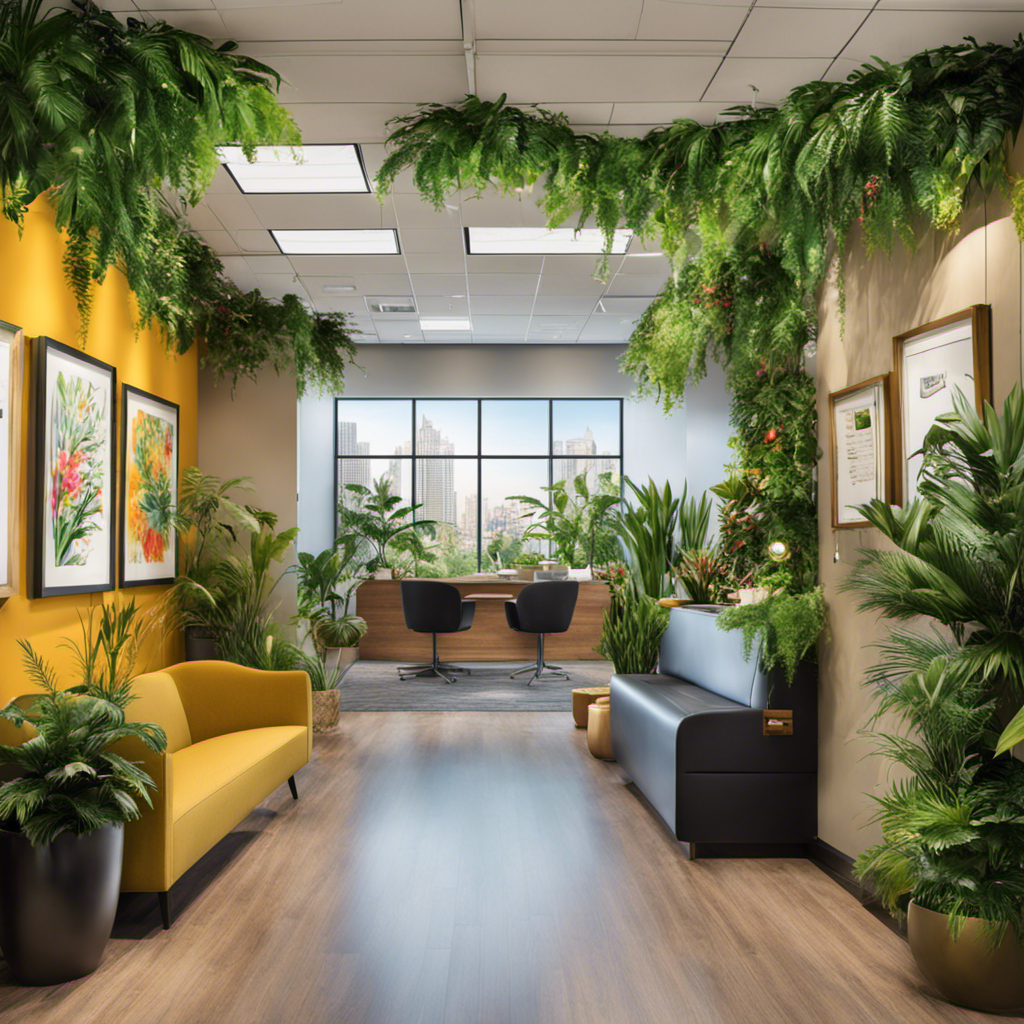
You may be wondering, ‘Can office decor truly make a difference?’ Let me assure you, stepping into this office will amaze you with its astonishing decor that will leave you in awe.
In this article, we will explore the power of office decor and how it can transform your workspace into an inspiring haven. From boosting productivity to maximizing creativity, we’ll delve into the psychology behind office decor and show you how to make a lasting impression with your office interiors.
Get ready to be amazed!
Key Takeaways
- Office decor greatly impacts employee productivity and morale.
- Thoughtfully decorated offices with soothing colors and natural elements reduce stress and encourage creativity.
- Personalized workstations increase motivation and satisfaction.
- Creating an inspiring workspace leads to creativity, collaboration, and well-being.
The Power of Office Decor
The power of office decor is often underestimated, but it can greatly impact employee productivity and morale. As someone who has spent countless hours in various office spaces, I can attest to the importance of creating a calming atmosphere that promotes employee well-being.
When I walk into an office that is thoughtfully decorated with soothing colors, comfortable furniture, and natural elements like plants, I immediately feel a sense of tranquility. This type of environment not only reduces stress but also encourages creativity and focus.
Additionally, incorporating elements that promote employee well-being, such as standing desks, ergonomic chairs, and wellness rooms, can further enhance productivity and job satisfaction. It may seem like a small detail, but the power of office decor should not be underestimated.
Creating an Inspiring Workspace
When it comes to creating an inspiring workspace, there are three key factors to consider: the optimal office layout, motivating color schemes, and personalized workstations.
The layout of the office plays a crucial role in promoting collaboration and productivity among employees, while the right color schemes can help to enhance mood and creativity.
Additionally, providing personalized workstations allows employees to feel a sense of ownership and comfort in their own space, ultimately leading to increased motivation and satisfaction.
Optimal Office Layout
As you enter this office, you’ll notice an amazing decor that optimizes the layout for maximum productivity. The open office concept allows for seamless collaboration and communication among team members. The ergonomic furniture is carefully selected to ensure comfort and efficiency.
Here are four key elements that contribute to the optimal office layout:
-
Flexible Workstations: The office offers a variety of workstations, from standing desks to adjustable chairs, allowing employees to choose the setup that best suits their needs.
-
Thoughtful Design: The layout is strategically planned to promote natural light, with large windows and skylights, creating a bright and energizing environment.
-
Well-Defined Spaces: The office is divided into different zones, such as quiet areas for focused work and communal areas for brainstorming and collaboration.
-
Technology Integration: The office is equipped with the latest technology, including wireless charging stations and video conferencing capabilities, ensuring seamless connectivity and productivity.
With these elements in place, the office provides an inspiring and functional workspace that promotes creativity, collaboration, and overall well-being.
Motivating Color Schemes
With its carefully chosen color schemes, the office creates a motivating environment for employees. Color psychology plays a significant role in influencing our emotions and mindset. The office incorporates vibrant and energizing colors that stimulate creativity and productivity. The walls are painted in a soothing shade of blue, known to enhance focus and calmness. The furniture is a mix of bold red and yellow, promoting enthusiasm and positivity. To further inspire and uplift, motivational quotes are strategically placed throughout the office. These quotes serve as constant reminders of the team’s goals and values. The combination of colors and motivational quotes creates an atmosphere that encourages innovation, teamwork, and personal growth. It’s incredible how something as simple as color can have such a profound impact on our motivation and overall well-being.
| Column 1 | Column 2 |
|---|---|
| "Believe you can and you’re halfway there." – Theodore Roosevelt | "Success is not final, failure is not fatal: It is the courage to continue that counts." – Winston Churchill |
| "The only way to do great work is to love what you do." – Steve Jobs | "Hardships often prepare ordinary people for an extraordinary destiny." – C.S. Lewis |
| "Your work is going to fill a large part of your life, and the only way to be truly satisfied is to do what you believe is great work." – Steve Jobs | "The future belongs to those who believe in the beauty of their dreams." – Eleanor Roosevelt |
| "Success is not the key to happiness. Happiness is the key to success. If you love what you are doing, you will be successful." – Albert Schweitzer | "The only limit to our realization of tomorrow will be our doubts of today." – Franklin D. Roosevelt |
| "The only place where success comes before work is in the dictionary." – Vidal Sassoon | "The only thing standing between you and your goal is the story you keep telling yourself as to why you can’t achieve it." – Jordan Belfort |
Personalized Workstations
Each employee’s workstation is personalized with items that reflect their individuality and preferences. From personalized office furniture to customized desk setups, our office spaces are designed to inspire creativity and productivity. Here’s a glimpse into the world of personalized workstations:
-
Ergonomic Chairs: Each employee has the freedom to choose a chair that suits their comfort needs. Whether it’s a sleek leather executive chair or a colorful ergonomic design, we prioritize comfort and style.
-
Standing Desks: Some employees prefer to work on their feet, and our personalized workstations cater to their needs. Standing desks with adjustable heights allow them to switch between sitting and standing positions effortlessly.
-
Inspiring Artwork: The walls of our office are adorned with artwork that reflects the passions and interests of our employees. From abstract paintings to motivational quotes, these personalized touches create a vibrant and inspiring work environment.
-
Personalized Accessories: From funky desk lamps to unique desk organizers, each employee has the freedom to add personalized accessories that make their workspace truly their own.
At our office, personalized workstations are more than just a trend – they are a way to empower our employees and create a workspace that celebrates their individuality.
Elevating Your Office Aesthetics
When it comes to elevating your office aesthetics, there are three key points to consider: colorful wall art, stylish desk accessories, and natural lighting enhancements.
Adding colorful wall art can instantly transform a dull and uninspiring workspace into a vibrant and energizing environment.
Stylish desk accessories not only add a touch of elegance and sophistication but also help in keeping your workspace organized and clutter-free.
Lastly, incorporating natural lighting enhancements such as large windows or skylights can provide an abundance of natural light, creating a more inviting and productive atmosphere.
Colorful Wall Art
As soon as you enter this office, you’ll be blown away by the amazing decor, including the colorful wall art. The vibrant and captivating wall murals add a touch of creativity to the space, setting the tone for a productive and inspiring work environment.
Here’s why the abstract office artwork is a must-have:
-
Stimulates creativity: The bold and imaginative designs of the wall murals ignite the creative spark within, encouraging innovative thinking and fresh ideas.
-
Enhances mood: The vibrant colors and intricate patterns of the artwork create a positive and uplifting atmosphere, boosting productivity and overall well-being.
-
Adds personality: The unique and eye-catching wall murals showcase the company’s individuality and make a statement about its values and culture.
-
Sparks conversation: The colorful wall art serves as a great conversation starter, fostering connections and promoting a sense of community among colleagues.
With the colorful wall art setting the stage, let’s explore the next aspect of office aesthetics: stylish desk accessories.
Stylish Desk Accessories
The stylish desk accessories in this office add a touch of sophistication to the workspace. With a variety of sleek and elegant options, the desk organization in this office is both functional and visually pleasing. One of my favorite additions is the stylish pen holders, which come in various designs and materials to suit different tastes. These pen holders not only keep pens and pencils organized, but they also serve as decorative pieces that enhance the overall aesthetic of the workspace. To give you an idea of the options available, here is a table showcasing three stylish pen holders featured in this office:
| Pen Holder | Material |
|---|---|
| Marble Pen Holder | Marble |
| Gold Wire Pen Holder | Metal |
| Acrylic Pen Holder | Acrylic |
These pen holders are just a glimpse into the thoughtful desk organization that makes this office a truly inspiring and stylish space for productivity.
Natural Lighting Enhancements
Take advantage of the natural lighting enhancements in this office to create a bright and inviting workspace. Natural light has numerous benefits, including boosting mood and productivity. But why stop there? By incorporating plants into your office, you can amplify these benefits even further. Here’s how:
-
Improved air quality: Plants naturally purify the air by absorbing carbon dioxide and releasing oxygen. This can help reduce headaches and increase focus.
-
Increased creativity: Studies have shown that being around nature can enhance creativity. Having plants in your office can inspire new ideas and fresh perspectives.
-
Stress reduction: The presence of plants has been proven to lower stress levels. Their soothing green color and natural beauty create a calming atmosphere.
-
Aesthetically pleasing: Plants add a touch of nature to your workspace, making it visually appealing and creating a more pleasant and inviting environment.
Transforming Your Office Into a Haven
When you enter this office, you’re greeted by amazing decor that transforms it into a haven. The carefully chosen furniture and accessories create a space that is not only visually appealing, but also highly functional for productivity. Office organization is a top priority here, and every item has its designated place. The ergonomic furniture ensures that comfort and health are prioritized, with adjustable chairs and standing desks available. To give you a glimpse of the attention to detail, here is a table showcasing some of the key elements in the office:
| Element | Purpose | Location |
|---|---|---|
| Floating shelves | Display books and decor | Wall behind desk |
| Cable management solutions | Keep cords organized and tangle-free | Underneath desk |
| Whiteboard | Brainstorming and note-taking | Opposite desk |
With such meticulous office organization and ergonomic furniture, this office truly becomes a haven for creativity and productivity.
Boosting Productivity With Stylish Decor
To boost your productivity, incorporating stylish decor into your office space is essential. Not only does it create a visually appealing environment, but it also has a profound impact on your mindset and overall work performance.
Here are four reasons why incorporating stylish decor is essential for creating a calming atmosphere and increasing productivity:
-
Personalization: Adding personal touches to your office space helps create a sense of ownership and comfort. This allows you to feel more at ease and focused.
-
Color Psychology: Choosing calming colors such as blues and greens can promote a sense of tranquility and reduce stress levels. Ultimately, this enhances your productivity.
-
Ergonomic Furniture: Investing in ergonomic furniture not only adds style to your office but also improves your posture and reduces the risk of physical discomfort. This enables you to work more efficiently.
-
Inspiration: Surrounding yourself with inspiring artwork, motivational quotes, and meaningful objects can ignite creativity and boost confidence. This leads to increased productivity.
Designing an Office That Inspires Confidence
Create a workspace that exudes confidence by incorporating elements that inspire and motivate you. When designing an office that promotes collaboration, it’s important to consider how the space can foster a sense of confidence and creativity among employees. One way to achieve this is by incorporating nature-inspired elements in the office design. By bringing elements of the outdoors indoors, such as plants, natural materials, and soothing colors, you can create an environment that promotes a sense of calm and connection with nature. Additionally, consider incorporating collaborative workspaces, such as communal tables or breakout areas, to encourage teamwork and idea sharing. A well-designed office that combines nature-inspired elements and promotes collaboration can have a profound impact on employee confidence and productivity.
| Elements | Description | Benefits |
|---|---|---|
| Plants | Adds a touch of greenery and improves air quality | Boosts mood and creativity |
| Natural Materials | Incorporates wood, stone, and other natural elements | Creates a warm and inviting atmosphere |
| Soothing Colors | Uses calming hues like blues and greens | Reduces stress and promotes focus |
| Collaborative Workspaces | Provides areas for teamwork and idea sharing | Facilitates collaboration and innovation |
Maximizing Creativity Through Office Design
As someone who’s always been fascinated by the power of design, I’m excited to delve into the topic of inspiring office layouts and how they can boost productivity.
The way an office is laid out can have a profound impact on the mindset and motivation of its employees. From open and collaborative spaces to cozy and creative nooks, the design choices made in an office can truly shape the way work is approached and accomplished.
Inspiring Office Layout
When you step into this office, you’re greeted by an inspiring layout that will motivate and energize you throughout the day. The combination of inspiring office furniture and ergonomic workspace design creates a space that is not only aesthetically pleasing but also functional and comfortable.
Here’s what makes this office layout truly inspiring:
-
Open floor plan: The office is designed with an open floor plan, allowing for easy collaboration and communication among team members. It fosters a sense of unity and promotes creativity.
-
Natural lighting: Large windows let in ample natural light, creating a bright and uplifting atmosphere. Natural light has been shown to improve mood and productivity, making it an essential element in an inspiring workspace.
-
Thoughtful color scheme: The office is adorned with a carefully chosen color scheme that promotes focus, creativity, and positivity. The colors are strategically used to enhance the overall ambiance and stimulate the mind.
-
Comfortable breakout areas: To encourage relaxation and creativity, the office provides comfortable breakout areas where employees can take a break, recharge, and brainstorm ideas.
This inspiring office layout is designed to inspire and empower employees, allowing them to reach their full potential and thrive in their work.
Boosting Productivity With Design
Maximize your productivity by incorporating strategic design elements into your workspace. Enhancing focus with minimalist design and incorporating nature elements can greatly increase your productivity levels.
A clutter-free, minimalist workspace allows for better concentration and reduces distractions. By simplifying your surroundings, you can create a calm and organized environment that promotes focus and efficiency.
Additionally, incorporating nature elements such as plants or natural light can have a positive impact on your productivity. Studies have shown that being surrounded by greenery or natural light can improve mood, reduce stress, and increase creativity. Bringing the outdoors inside can help create a more refreshing and inspiring workspace, leading to enhanced productivity and overall well-being.
The Psychology of Office Decor
Step into this office and you’ll be captivated by its amazing decor. The carefully chosen colors, the sleek furniture, and the tasteful artwork create an environment that is not only visually appealing but also promotes employee satisfaction. Here’s why:
-
Colors: The use of calming blues and greens can reduce stress levels and increase productivity.
-
Ergonomics: Comfortable chairs and adjustable desks ensure that employees can work efficiently without discomfort or strain.
-
Natural elements: Incorporating plants and natural light can improve mood and creativity.
-
Personalization: Allowing employees to personalize their workspaces fosters a sense of ownership and belonging.
By paying attention to these details, this office creates an environment that employees enjoy working in, leading to higher job satisfaction and productivity.
Now, let’s explore how we can make a lasting impression with office interiors.
Making a Lasting Impression With Office Interiors
To leave a memorable impact with your office interiors, focus on creating a space that reflects your company’s values and inspires creativity. Office design trends are constantly evolving, and it’s important to stay up-to-date to create a welcoming atmosphere.
Incorporating elements like natural light, plants, and comfortable furniture can make employees and visitors feel at ease. Consider using colors that align with your brand identity and evoke positive emotions. Adding unique artwork or motivational quotes can also inspire creativity and boost productivity.
Pay attention to the layout of the space, allowing for collaboration and communication while still providing areas for privacy and concentration. By carefully considering these details, you can create an office that not only looks impressive but also fosters a positive and productive work environment.
What Elements of Amazing Decor Should Be Included in a Law Office?
A visually appealing law office can enhance the professional environment. Incorporating cutting-edge decor elements can add a modern touch, making clients and employees feel inspired and impressed. From sleek furniture to contemporary artwork, the right choices can create a stylish atmosphere. Attention to detail is key, ensuring the decor aligns with the office’s overall aesthetic. To showcase the remarkable transformation, a captivating cuttingedge decor law office slideshow can highlight the thoughtfully curated elements and inspire others in the legal industry.
Personalizing Your Office Space
When personalizing your office space, it’s important to consider your own unique style and incorporate elements that reflect your personality. Creating a comfortable environment is key to boosting productivity and overall well-being.
Here are four ways to personalize your office space and make it truly your own:
-
Choose colors that inspire you: Whether it’s a vibrant accent wall or calming pastel tones, color can have a significant impact on your mood and productivity.
-
Incorporate personal mementos: Displaying photos of loved ones, artwork, or souvenirs can bring a sense of nostalgia and comfort, reminding you of what truly matters.
-
Organize with style: Invest in stylish storage solutions that not only keep your workspace tidy but also add visual interest and personality to the room.
-
Add greenery: Plants not only purify the air but also create a soothing and inviting atmosphere, making your office space feel more alive and vibrant.
Frequently Asked Questions
How Much Does It Cost to Decorate an Office?
Decorating an office can be a budget-friendly endeavor if you embrace cost-effective design ideas. By carefully planning and prioritizing, you can create a stylish and functional workspace without breaking the bank.
Where Can I Buy Unique and Stylish Office Decor Items?
I’m familiar with the top online retailers for office decor items. To create a minimalist office decor style, focus on simplicity, clean lines, and neutral colors. Let me share some tips with you.
What Are Some Common Mistakes to Avoid When Designing an Office Space?
When designing an office space, it’s important to avoid common mistakes such as neglecting ergonomic furniture and failing to maximize natural light. These elements contribute to a comfortable and productive work environment.
Are There Any Specific Colors or Themes That Are Recommended for Office Decor?
When it comes to office decor trends, there are no specific colors or themes recommended. However, a well-designed office space can have numerous benefits, such as increased productivity and improved employee morale.
How Can I Incorporate Natural Elements Into My Office Design?
To incorporate natural elements into my office design, I can add plants, use materials like wood and stone, and let in natural light. These elements can create a calming and productive environment, promoting overall well-being.
Conclusion
Well, after spending all this time exploring the world of office decor, I must say, I am thoroughly convinced of its transformative power. Who would have thought that a few well-placed plants and some stylish artwork could turn a drab workspace into a haven of creativity and productivity?
It’s like magic, really. So, next time you step into your office, take a moment to appreciate the amazing decor that surrounds you. And hey, if nothing else, at least it makes for a great Instagram backdrop.
Happy decorating!
- About the Author
- Latest Posts
Meet Bethia, the visionary designer at ByRetreat who brings a touch of magic to every remote workspace she creates. With a boundless imagination and an eye for beauty, Bethia is passionate about transforming ordinary spaces into extraordinary havens of creativity and comfort.
Bethia possesses a unique talent for envisioning the perfect combination of furniture, colors, and textures that harmonize seamlessly in a room. She understands that selecting furniture goes beyond mere functionality; it’s about curating pieces that evoke a sense of style and sophistication while enhancing the overall ambiance.
-
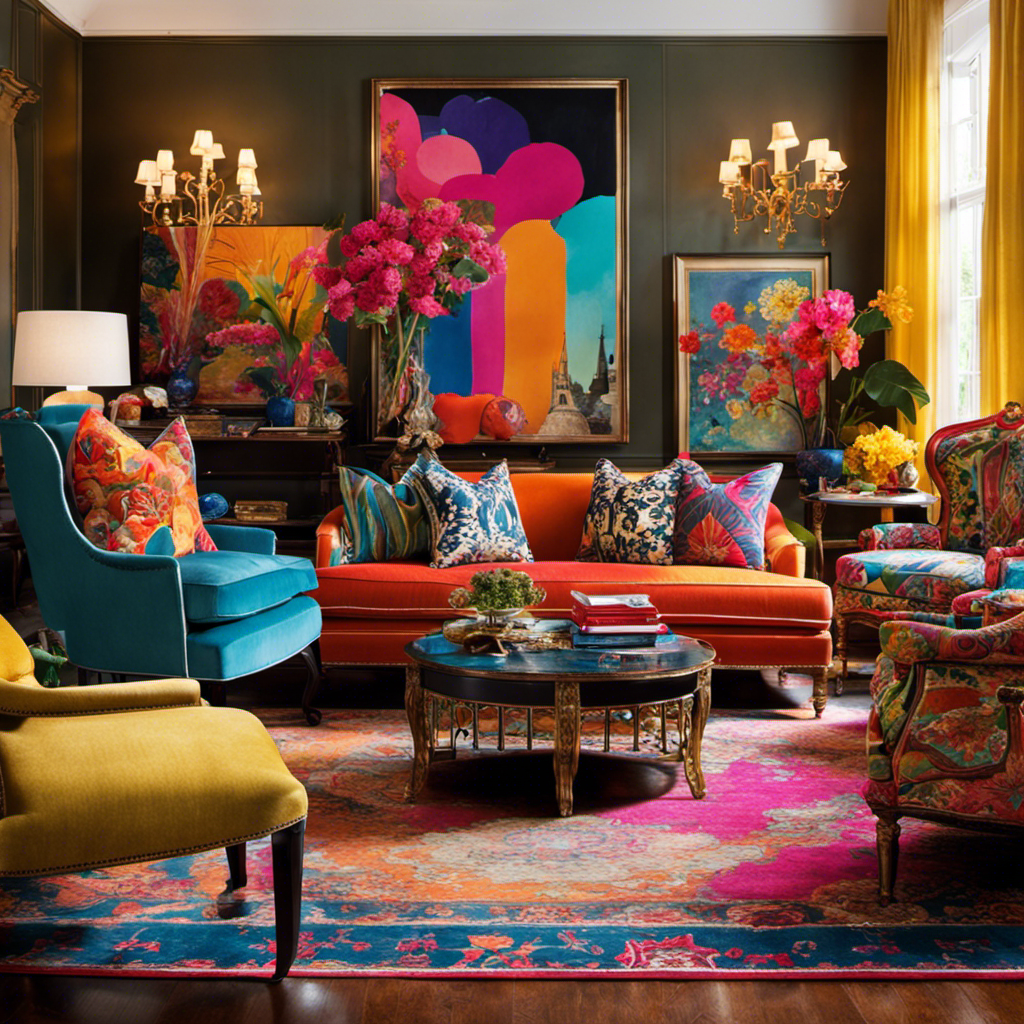
 Decor7 days ago
Decor7 days agoMaximalist Decor Explained: Embrace More Style
-

 Vetted4 weeks ago
Vetted4 weeks ago15 Best Drip Irrigation Systems to Keep Your Garden Thriving
-

 Vetted2 weeks ago
Vetted2 weeks ago15 Best Foot Massagers for Neuropathy to Soothe Your Feet and Relieve Discomfort
-

 Vetted3 weeks ago
Vetted3 weeks ago15 Best Sports Laundry Detergents for Keeping Your Activewear Fresh and Clean
-
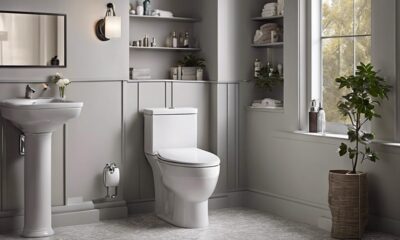
 Vetted3 weeks ago
Vetted3 weeks ago15 Best Tall Toilets for Seniors That Combine Comfort and Safety
-

 Vetted3 weeks ago
Vetted3 weeks ago15 Best Dish Scrubbers to Keep Your Kitchen Sparkling Clean
-
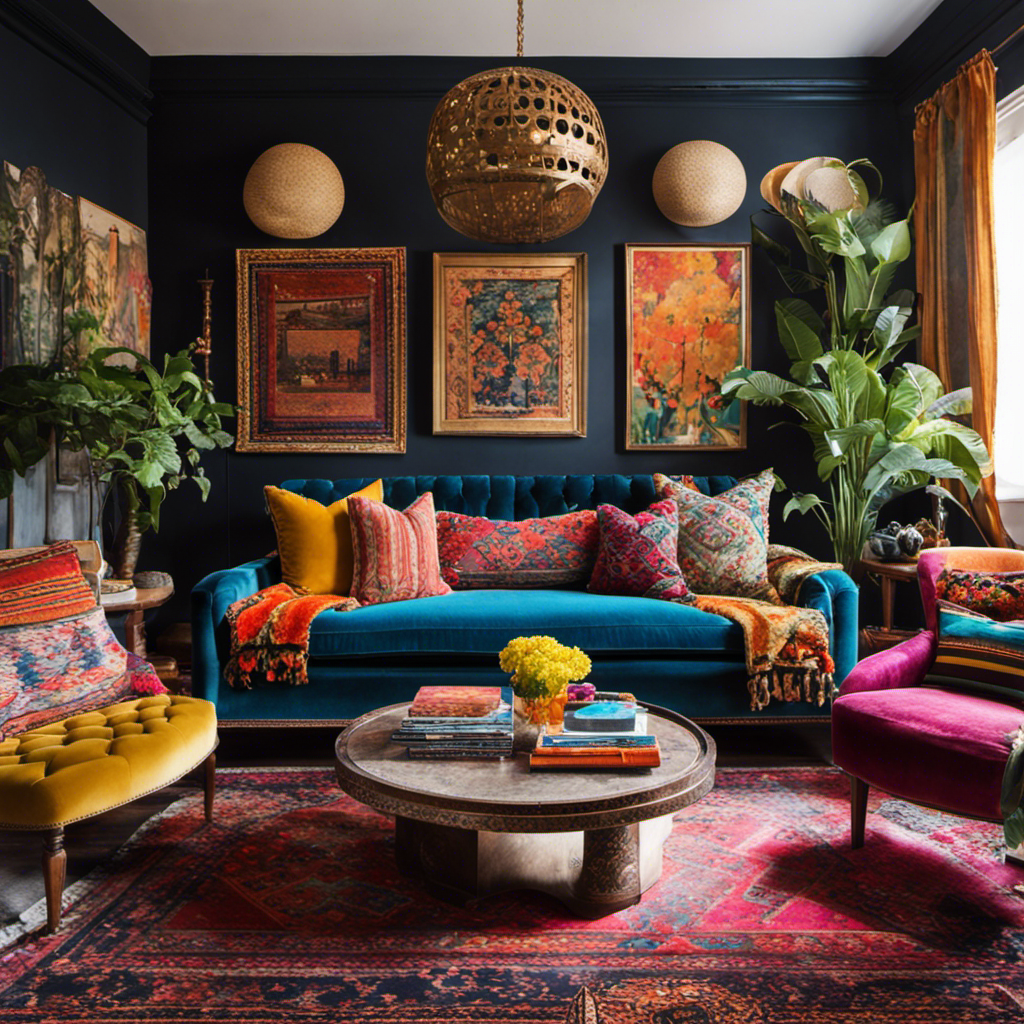
 Decor3 weeks ago
Decor3 weeks agoWhat Is Eclectic Home Decor
-

 Vetted4 days ago
Vetted4 days ago15 Best Organic Pest Control Solutions for a Naturally Pest-Free Home





